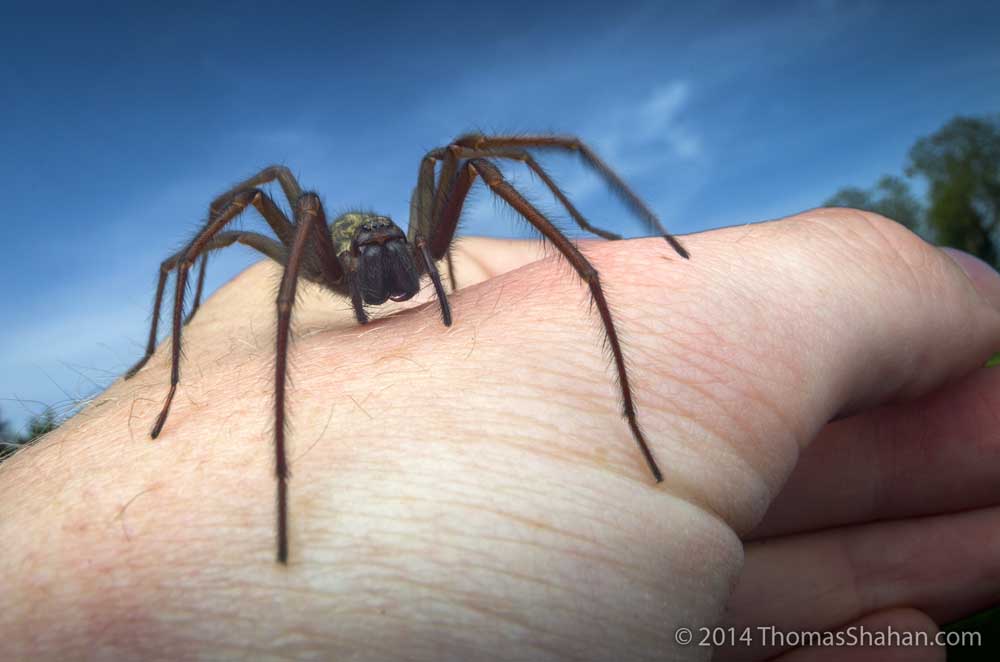Unraveling the myths about spiders
Published 12:00 am Friday, November 28, 2014

- Thomas Shahan/Oregon Department of Agriculture/Submitted photoA female Eratigena atrica, the "giant house spider" found in Oregon and a very close relative of Eratigena agrestis, the hobo spider." Both are very common and very harmless. It's a myth that spiders some into homes at this time of year to get out of the cold. It's more likely to do with males looking for female spiders.
They are creepy, crawly and wrapped in a web of myths — spiders. And around this time every year, questions about them start pouring in to the Oregon State University Extension Service.
Over her 25 years with the Extension Service in Prineville, Office Manager Pam Wiederholt has seen all sorts of spiders. People come to the office with captured spiders, usually this time of year, hoping for an identification and clarification as to whether they could be a danger.
“They have been brought in on tree limbs, fly swatters, pill bottles, the sticky side of duct tape, and just this week the bottom of a snow boot!” wrote Wiederholt in the office’s Central Oregon Agriculture e-newsletter for Nov. 21.
The annual phenomenon spurred Wiederholt to study spiders and attempt to dispel the many spider myths, ranging from which spiders are in Central Oregon to spider behavior.
To start: the myth of spiders coming into homes in fall to get out of the cold.
“I kind of believed that myself for a long time,” she said.
While it may seem to be cold-related, increased spider activity this time of year likely has more to do with males looking for female mates, Wiederholt said.
Then there is the myth about spiders crawling through a drain and into a sink, shower or bathtub.
“Well, they can’t,” Wiederholt said. Modern drains include a water-filled sediment trap that block spiders from passing through.
And the myth about brown recluse spiders being found in Oregon?
“We do not have brown recluse here, period,” she said.
Wiederholt is not alone in being quizzed about spiders by people curious about their finds. And she is not the only person in the field eager to address myths.
Andy Eglitis, entomologist for the Deschutes National Forest in Bend, and Thomas Shahan, imaging specialist for the Oregon Department of Agriculture’s entomology lab, are familiar with the increase in spider discoveries during fall. Entomologists study insects.
Spiders are actually not insects — rather they are arachnids — but entomologists often end up fielding spider questions.
The Oregon Department of Agriculture’s spider information Web page is second in hits only to the agency’s home page, Bruce Pokarney, Department of Agriculture spokesman, wrote in an email.
“That is one that people flock to,” he said.
Given a chance to dispel spider myths, Eglitis emphasized that people get unnecessarily creeped out by them.
“People should try to exhibit more tolerance than they do,” he said. “… They are not as menacing or as aggressive as people like to think.”
So, the myth about spiders being aggressive and looking to bite people?
“They are actually really unconcerned about you,” Eglitis said. “They don’t care. …They are just doing their own thing.”
He also said it is a myth that all spiders should be put outside if found in a home.
“If it wanted to be outdoors, that is where it would be,” he said.
Many of the people who come into or call Shahan’s laboratory wonder whether the spider they have found is a hobo spider, which has an undeserved infamous reputation in Oregon.
“A lot of people are worried about them,” Shahan said.
Enter another myth: that hobo spiders are dangerous. While some people even call hobo spiders “aggressive house spiders,” Shahan said they are benign, like most spiders in the state.
The black widow spider does have toxic venom and is found in Central Oregon, but the chances of being bit by one are slim.
“Spiders don’t bite without direct reason,” Shahan said. Such a reason would be if a person presses down on the spider or traps a spider — if, for example, a spider was in a shoe someone tried to slip onto his foot.
Wiederholt, Eglitis and Shahan said the scariest things people have heard about spiders are probably myths.
“So Oregon is a great place to not worry about spiders,” Shahan said.
— Reporter: 541-617-7812,
ddarling@bendbulletin.com






